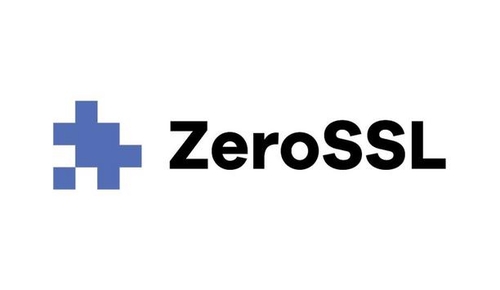FAUN.dev's Programming Weekly Newsletter
🔗 View in your browser | ✍️ Publish on FAUN.dev | 🦄 Become a sponsor
🔗 View in your browser | ✍️ Publish on FAUN.dev | 🦄 Become a sponsor
VarBear
#SoftwareEngineering #Programming #DevTools
🔍 Inside this Issue
Agents are creeping from demos into prod, MCP wiring editors to infra, while cloud‑native grows up and even attackers are automating. New tools land (Raptor mini, Code Wiki, Flutter 3.38) plus smart detours, game dev drills, Zig, and a data‑driven RLM study, worth your full scroll.
🔌 10 MCP Servers to Optimize Developer Workflows
☁️ 2025's Cloud Native Reality Check: Who's In, Who's Lagging
🕵️ Chinese Hackers Use Anthropic's AI to Launch Automated Cyber Espionage Campaign
🦖 GitHub’s New Raptor mini Makes Copilot Smarter - and It’s Free (for Now)
🎮 How to Improve Your Programming Skills by Building Games
📊 I Analyzed 2,500 YouTube Videos to Understand Why RedLetterMedia Are Internet Darlings
📚 Introducing Code Wiki: Accelerating your code understanding
🛠️ Practical coding with AI Assistance
🐦 What’s new in Flutter 3.38
⚡ Zigbook - Learn the Zig Programming Language
Brain full, PRs pending - go make it count.
Have a great week!
FAUN.dev() Team
🔌 10 MCP Servers to Optimize Developer Workflows
☁️ 2025's Cloud Native Reality Check: Who's In, Who's Lagging
🕵️ Chinese Hackers Use Anthropic's AI to Launch Automated Cyber Espionage Campaign
🦖 GitHub’s New Raptor mini Makes Copilot Smarter - and It’s Free (for Now)
🎮 How to Improve Your Programming Skills by Building Games
📊 I Analyzed 2,500 YouTube Videos to Understand Why RedLetterMedia Are Internet Darlings
📚 Introducing Code Wiki: Accelerating your code understanding
🛠️ Practical coding with AI Assistance
🐦 What’s new in Flutter 3.38
⚡ Zigbook - Learn the Zig Programming Language
Brain full, PRs pending - go make it count.
Have a great week!
FAUN.dev() Team
⭐ Patrons
zerossl.com
Easily secure any site by putting SSL management on autopilot, supporting one-step validation and renewal via REST API.
ℹ️ News, Updates & Announcements
blog.flutter.dev
Flutter 3.38 drops with Dart 3.10’s new dot shorthand - on by default. Less boilerplate, more signal.
Android gets predictive back gestures, the web gets stateful hot reload, and Windows devs finally get multi-monitor support. Overlay controls are tighter. Previews play nicer with your IDE.
Under the hood, Flutter’s tuning itself for the future: modern app lifecycles, iOS UIScene, and Android’s looming 16KB stack page shift. Less patchwork, more platform-native flow.
Android gets predictive back gestures, the web gets stateful hot reload, and Windows devs finally get multi-monitor support. Overlay controls are tighter. Previews play nicer with your IDE.
Under the hood, Flutter’s tuning itself for the future: modern app lifecycles, iOS UIScene, and Android’s looming 16KB stack page shift. Less patchwork, more platform-native flow.
faun.dev
GitHub just dropped Raptor mini, a leaner Copilot model, now in public preview for VS Code users on Free, Pro, and Pro+ plans. Support for GitHub.com, Visual Studio, and JetBrains IDEs is on the way.
Meanwhile, Grok Code Fast 1, GitHub's code comprehension tool, gets free access extended, indefinitely.
Meanwhile, Grok Code Fast 1, GitHub's code comprehension tool, gets free access extended, indefinitely.
faun.dev
56% of backend devs now count as cloud native. That rise tracks with heavy use of API gateways (50%) and microservices (46%). Only 30% touch Kubernetes directly, but hybrid (30%) and multi-cloud (23%) setups are gaining ground. The shift? Tighter security and chunkier, modular infra.
System shift: Cloud native isn’t all about Kubernetes anymore. It's leaning into internal platforms and MLaaS layers that spare developers from wrestling with bare-metal config.
System shift: Cloud native isn’t all about Kubernetes anymore. It's leaning into internal platforms and MLaaS layers that spare developers from wrestling with bare-metal config.
developers.googleblog.com
Google just dropped Code Wiki in public preview. It builds live, structured docs straight from your codebase - and stays synced as things change. Docs evolve with your repo. Automatically.
A Gemini-powered chat agent sits at the center, armed with full-repo context, clickable code links, and diagrams pulled from your latest commit.
A Gemini-powered chat agent sits at the center, armed with full-repo context, clickable code links, and diagrams pulled from your latest commit.
thehackernews.com
Chinese state-backed threat actors orchestrated automated cyber attacks using AI technology developed by Anthropic in a highly refined espionage campaign in mid-September 2025. The attackers leveraged AI to execute 80-90% of tactical operations independently at physically impossible request rates, marking a significant evolution in adversarial use of the technology.
⭐ Sponsors
cloudns.net
Cloud DNS is the most cost-effective way to manage your domain names. You can use it with Free DNS or Premium DNS, depending on your needs. Our Cloud DNS service provides up to 10,000% uptime Service Level Agreement (SLA).
ClouDNS offers Free DNS zone migration for all new customers!
ClouDNS offers Free DNS zone migration for all new customers!
🔗 Stories, Tutorials & Articles
medium.com
Developers using AI agents like Cursor are hitting a wall: vague, messy blob-code. Especially in frameworks like LangChain, where sketchy training data can produce long-winded or broken output. The problem? AI generates "just vibes" instead of structure.
The fix: go in with a plan. A spec-driven, context-rich prompting workflow saves time and sanity. Architect with intent. Keep experiments isolated. And treat your AI assistant like a junior dev, correct early, correct often.
The fix: go in with a plan. A spec-driven, context-rich prompting workflow saves time and sanity. Architect with intent. Keep experiments isolated. And treat your AI assistant like a junior dev, correct early, correct often.
python.plainenglish.io
A data analyst pulled subtitles and metadata from ~2,500 YouTube videos, rigged up yt-dlp with proxy routing and scripts to automate the haul. The goal? Stack RedLetterMedia (RLM) against algorithm-first mega-channels like MrBeast and MKBHD.
By slicing through heatmaps, subtitles, and metadata, the analysis shows: RLM’s stubborn refusal to play the algorithm game isn’t killing their reach. In fact, their off-grid style might be punching above its weight.
By slicing through heatmaps, subtitles, and metadata, the analysis shows: RLM’s stubborn refusal to play the algorithm game isn’t killing their reach. In fact, their off-grid style might be punching above its weight.
zigbook.net
Learning Zig is not just about adding a language to your resume. It is about fundamentally changing how you think about software.
The book promise: “You came for syntax. You'll leave with a philosophy.”!
The book promise: “You came for syntax. You'll leave with a philosophy.”!
freecodecamp.org
Building games forces devs to get good at event-driven code, modular design, real-time tuning, and creative debugging, fast. It sharpens instincts around ECS patterns, math-backed logic, and hands-on UX thinking.
nordicapis.com
The Model Context Protocol (MCP) wires AI agents into real-world dev workflows, think pushing to GitHub, deploying APIs, tweaking Docker, all straight from the code editor.
MCP servers like GitHub MCP, Apidog MCP, and Supabase MCP plug into popular tools and infra. They let LLMs update code, ship APIs, or touch local files using plain old language.
Brave Search MCP enhances search capabilities while maintaining user privacy. DesktopCommanderMCP provides terminal control for code navigation and Git operations. MCP Compass adds auto-pilot. It picks the right server for the job, no manual setup needed. And more!
MCP servers like GitHub MCP, Apidog MCP, and Supabase MCP plug into popular tools and infra. They let LLMs update code, ship APIs, or touch local files using plain old language.
Brave Search MCP enhances search capabilities while maintaining user privacy. DesktopCommanderMCP provides terminal control for code navigation and Git operations. MCP Compass adds auto-pilot. It picks the right server for the job, no manual setup needed. And more!
⭐ Supporters
bytevibe.co
Show your Kubernetes pride with the Kubectl Heavy Blend™ Hoodie — soft, durable, and built for long dev sessions or quick rollouts. This hoodie keeps you warm and ready to ship, whether you’re scaling clusters, sipping coffee or debugging last week incident :)
⚙️ Tools, Apps & Software
github.com
MineContext is your proactive context-aware AI partner(Context-Engineering+ChatGPT Pulse)
🤔 Did you know?
Did you know Linux cgroup v2 can throttle memory use before hitting an OOM kill? When a group crosses its memory.high limit, the kernel slows new allocations and reclaims pages inside that group instead of killing processes right away. Tools like systemd-oomd and Kubernetes MemoryQoS use this to shed load gracefully and keep nodes stable.
😂 Meme of the week

🤖 Once, SenseiOne Said
"We centralize business logic, then replicate the release steps across local scripts, CI, Dockerfiles, Kubernetes manifests, and a Makefile. The code is modular; the delivery is copy-pasted."
— SenseiOne
— SenseiOne
👤 This Week's Human
This week, we’re highlighting Corina Taban, a Founder of 934 Leadership Advisors and Researcher & Doctoral Candidate at Grenoble Ecole de Management. A former Microsoft and Meta negotiator, she led multi‑million‑dollar partnerships with C‑level teams and now builds research‑backed leadership programs for tech companies grounded in organizational behavior and psychology. Her doctoral work on the psychological contract was recognized at the 2025 Academy of Management Global Conference, and she was named among the McKinsey Next Generation Women Leaders, having lived in five countries.



